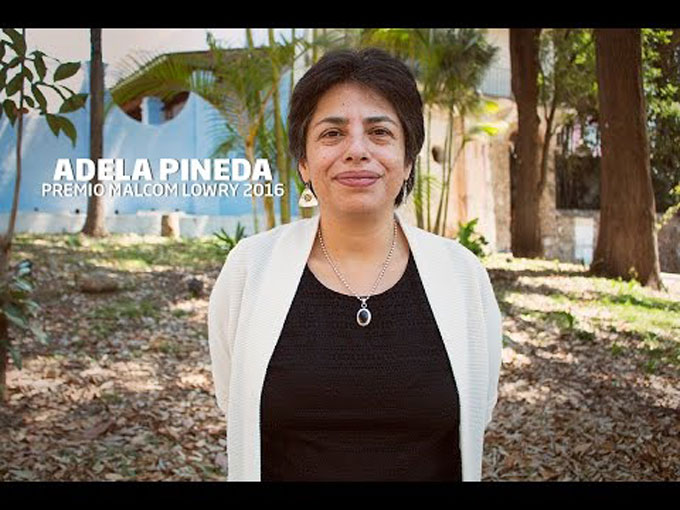Mexico was a magnet for John Steinbeck, a frequent visitor and sympathetic observer who explored the threats posed by assumptions he questioned to a culture he admired in fiction (The Pearl), film (The Forgotten Village), and history (the writer’s superbly researched introduction to Viva Zapata!). Fresh evidence that the feeling was mutual can be found in Steinbeck y Mexico: Una Mirada Cinematografica en la Era de la Hegemonia Norteamericana by Adela Pineda, Associate Professor of Spanish at Boston University and Director of Latin American Studies Program at Boston University’s Frederick S. Pardee School of Global Studies. “Steinbeck’s engagement with the history and the cinematic archive of revolutionary Mexico took place in an embattled field of political and cultural activity on both sides of the Río Grande, hence it could not be but complex and contradictory,” explains Pineda, winner of the Malcolm Lowry Fine Arts Literary Essay Award from the Instituto Nacional de Bellas Artes for Las Travesías de John Steinbeck Por México, El Cine y Las Vicisitudes Del Progreso. Pineda’s archival research revealed “the many facets of Steinbeck as a novelist, scriptwriter, film collaborator, and public intellectual”; writing a book about “Steinbeck going global from the vantage point of Mexico” is a fitting tribute to an admiring author whose research into a vanishing way of life became material for enduring art.
- Home
- Books
- Life
- Music & Media
- Places & Events
- Politics & Religion
- April 18, 2025
About John Steinbeck

Most read American writer of the 20th century. Born in California. Died in New York. Romantic. Realist. Rebel. More about John Steinbeck
FacebookTwitterLinkedInGoogle+ PinterestMySpaceStumbleUponYouTubeStay In Touch
Receive email updates and stay in touch with SteinbeckNow.com
Recent Posts
- New Video from San Jose State University on John Steinbeck: A Writer’s Vision
- Celebrate! Western Flyer Returns to Monterey Bay
- Henry Fonda’s Daughter, Jane Fonda, to Receive 2023 John Steinbeck Award
- A Chance Christmas Dinner with John Steinbeck in 1947
- Saved! John Steinbeck’s Retreat in Sag Harbor
- Celebrating Woody Guthrie’s Grapes of Wrath Connection
- John Steinbeck Haunts Malcolm Harris’s Palo Alto
- San Jose State Hosts Steinbeck Conference
- For John Steinbeck, the Rains in Pajaro Hit Home
- Photo Inspires Sumi Ink Portrait by Eugene Gregan
Latest Tweets
-
No tweets found.
- View All SteinbeckNow.com Tweets


Can I get a copy of this in English?
Not at this time.
My book The Mexican Revolution on the World Stage, Intellectuals and Film in the Twentieth Century (SUNY PRESS 2019), has several chapters that drew on my previous book on Steinbeck y Mexico.
Adela Pineda Fraco (author of Steinbeck y Mexico)